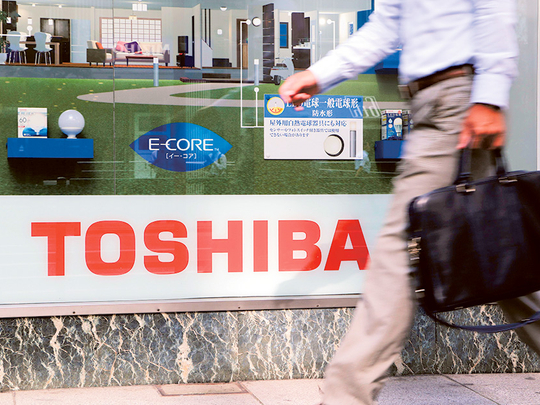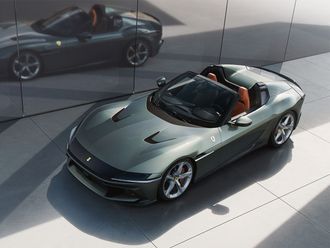
Losing your chief executive is bad enough. But for Toshiba, which has just admitted to a billion-dollar inflation of its profits since 2008, the news could get worse. In the wake of the resignation of Hisao Tanaka last week, it has restated historical profits and as a result may have to close or sell its PC business, where sales have been sagging over the past five years, and which was one source of the overstatement.
The losses there could have been piling up for some time. And few would be surprised by Toshiba’s likely exit from PCs, which have become a shrinking business increasingly dominated by a handful of players that extract economies of scale — and all the available profits. “The PC market in recent quarters has been a bloodbath,” says Tim Coulling, senior analyst at tech consultancy Canalys. “Typical mainstream PC makers expect low single-digit per cent operating margins. It’s razor-thin. If you get to the low-cost machines, then they’re scrabbling for dollars on products.”
The squeeze on margins is so fierce that even Lenovo, the world’s largest PC maker, tried to boost profits by bundling a software program called Superfish on some of its PCs. It said the aim was “to improve the [user’s] shopping experience”.
Instead, it exposed users to a security risk — potentially revealing bank transactions, for instance, and had to uninstall it. It is whispered among some analysts that only the preinstallation of third-party antivirus programs — which try to get users to sign up to subscriptions — keeps some PC makers afloat at all, owing to the fees they receive from antivirus software firms.
It was the PC business that triggered the current turmoil at the Japanese giant, after an internal auditor asked in late January to look at the accounts for the company’s laptop business. That eventually concluded with an examination by an external panel, whose 294-page report noted “inappropriate accounting” in various business segments, including those “relating to component transactions” in the PC business.
In a statement on July 21 it said that 111 billion yen (£580 million) of assets in the PC business in the past six financial years were “under consideration” for re-evaluation. That could affect its financial results, which will be finalised by August 31. But even in its most recent quarterly report, before any restatement, Toshiba said that its PC business recorded restructuring costs of 46 billion yen in the previous three quarters, and that otherwise it “would have recorded positive operating income over three consecutive quarters”.
Coulling remarks that Toshiba’s traditional PC market share has been “on the slide for a number of years”. The truth may be that Toshiba’s PC business was far from profitable. Even though Toshiba is the world’s seventh- largest PC maker, shipping about 22 million computers in 2014 according to analysis company IDC, it is struggling, along with a dwindling group of others outside the top six manufacturers — Lenovo, HP, Dell, Asus, Acer and Apple — to eke a profit from a sector that has deflated dramatically.
The worldwide PC market has fallen back so far from its peak in 2011, when 361 million units were sold, that analysts now doubt it will pass 300 million units this year. That is despite the launch this Wednesday of the new version of Microsoft’s Windows, which has traditionally increased PC sales.
But whereas 20 years ago Windows 95 was launched amid midnight store openings, a Rolling Stones-themed ad blitz and a Bill Gates-led roadshow, this time it will happen silently. Millions of PCs will be updated for free via the internet. Neither analysts nor the chipmaker Intel, which provides the essential chips for PCs, expects a significant rise in sales.
The PC business is shrinking because the market is saturated, and has moved to a replacement phase where sales come only from switching old PCs with new models. With about 1.5 billion PCs in use around the world, split roughly half-and-half between businesses and consumers, people now tend to spend money on smartphones or tablets, and delay replacing their PC.
As sales have dropped, the big six have been increasing dominance through using their scale to buy components more cheaply and dominate sales to retailers and businesses. Since 2011, their share of the PC market has grown from 60 per cent to 71 per cent. More importantly, the “others” in the business have seen the total number of PCs they ship more than halve, from 36 million per quarter in mid-2011 to 17.4 million in the quarter from April to June. And as that tide goes out, the minnows are increasingly exposed.
As Coulling points out, they are being squeezed for profit because the success of Windows has brought with it the commoditisation of PCs, and constantly falling prices. Since 2010 the world average selling price for a PC from the big five Windows PC makers — excluding Apple — has dropped from $600 to $500, and dragged profits down with it.
Companies and consumers are generally unwilling to splash out $1,000 or more on ultrathin laptops, touchscreen models, or devices that can double up as PCs or tablets, which yield more profit. The odd one out is Apple, which commands premium prices for its computers — averaging over $1,200 (£775) for more than a decade — and yet has seen its market share rise steadily for 10 years, even while the rest of the market has commoditised. Why? “Because it’s not just a hardware player. They make the hardware and have their own operating system, so you either buy a Mac or don’t,” says Coulling. Some analysts estimate Apple’s operating margin on its Macs at more than 15 per cent — which suggests it grabs more than half of all the profits in the whole PC industry.
The pressure on the rest has told in different ways. Dell went private in September 2013 as it tried to focus more on software and services and play down its PC business, which is still the world’s third largest. Japan’s Sony withdrew from PCs altogether in 2014, unable to make its well-regarded but expensive Vaio line profitable amid falling sales. Samsung withdrew from Europe last autumn, and now concentrates on South Korea, the US, Brazil and China, while Fujitsu concentrates on Japan and Germany.
Loren Loverde, senior PC analyst at IDC, says that beyond Samsung and Fujitsu, the two companies ranking below Toshiba, “most vendors are specialised in a few countries, or specific vertical [market], and volume is more volatile. They certainly feel the pressure from the large players”. With the dollar strong, and the market still falling, Toshiba’s exit might only be a matter of time. But that still leaves the others to compete for its tiny share. So it looks bleak for the “others”? “Yes,” says Canalys’ Coulling. “That’s a fairly widely held view within the industry.”












